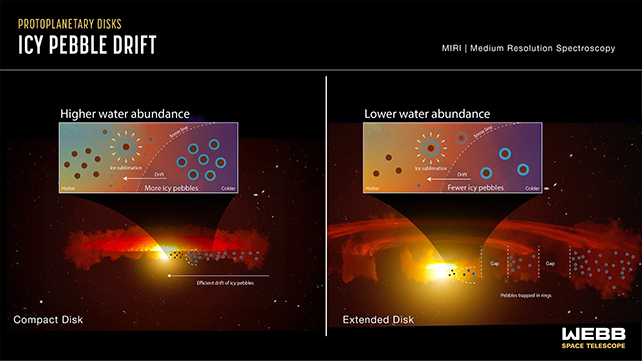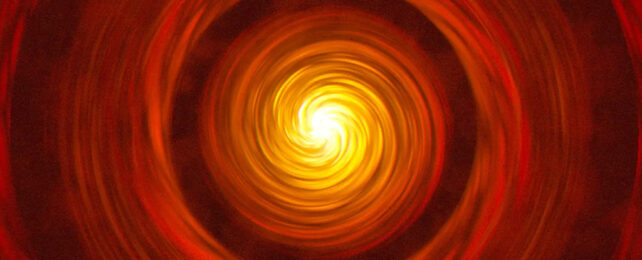A crucial piece of evidence in support of a long-standing hypothesis on planet formation has been observed by the James Webb Space Telescope (JWST), meaning astronomers are confident they've got a part of the cosmic process right.
JWST data processed by an international team of researchers backs up the theory of 'icy pebble drift', which is thought to be vital in bringing together the dust and rocks that eventually turn into planets like our own.
Simply put, icy pebble drift works like this: as tiny, ice-covered bits of material bump together in the outer reaches of a young protoplanetary disk they lose momentum, allowing them to fall towards the star into a warmer zone where their frozen coating sublimates.
It's from this ring of fine debris and water vapor that rocky planets form, effectively serving as a delivery service of building materials right across a newborn solar system.
As neat as the idea was, studies of distant starlight that could indicate the position of that water vapor have so far been too blurry to conclusively say for certain whether this drift of icy pebbles takes place at all.

Here the team looked at higher resolution images taken with the JWST's mid-range infrared camera to examine two varieties of protoplanetary disk; compact and extended. As the names suggest, extended versions are bigger and are made up of distinct rings separated by pressure and gravity, while compact protoplanetary disks are more tightly packed together.
What the new research shows is that icy materials can indeed move across protoplanetary disks, though it happens more easily on compact disks.
"In the past, we had this very static picture of planet formation, almost like there were these isolated zones that planets formed out of," says planetary scientist Colette Salyk from Vassar College.
"Now we actually have evidence that these zones can interact with each other. It's also something that is proposed to have happened in our Solar System."
By comparing the data from both compact and extended disks, the team was able to see more water vapor collected at the 'snowline' of the compact disk, where icy pebbles should lose a lot more vapor.
That backs up the idea that building materials can move inward across the disk, a phenomenon that is more efficient in compact disks where large gaps don't need to be traversed. As the sublimating stream of pebbles continue to snow down from the beyond, they provide both solids and water to create the seeds of a new planet, so the theory goes.
It's a fascinating finding, made possible by the high-resolution, super-sensitive instrumentation on board the JWST. Now astronomers can continue to investigate planet formation, knowing that this particular process is indeed happening.
"Webb finally revealed the connection between water vapor in the inner disk and the drift of icy pebbles from the outer disk," says astrophysicist Andrea Banzatti from Texas State University.
"This finding opens up exciting prospects for studying rocky planet formation with Webb!"
The research has been published in Astrophysical Journal Letters.
